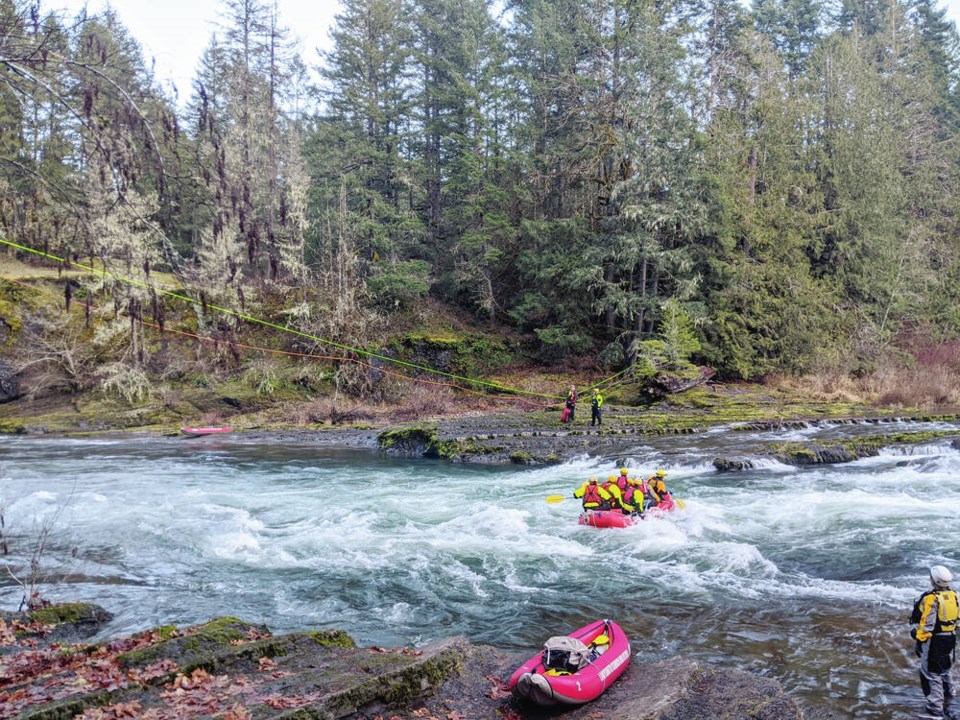People considering a leisurely float down the Cowichan River to escape the heat are being advised to confine themselves to the upper reaches near Cowichan Lake, after a man was badly injured last week in the lower section of the river, where the water is faster-moving and there are submerged hazards.
Last November’s floods have added more wood to the river, with hazards now extending across the main path where tubers typically float.
Four adults and a two-year-old were floating on the lower section of the river last Tuesday when they came upon a tricky section downstream from Vimy Pool. The two women and child got off their floats, while the two men continued, but then the raft they were in struck a log on an S-bend in the river, throwing them into the water.
One man struck his head but managed to crawl onto the log and return to shore.
The second man was swept away and continued two kilometres downstream until he was finally pulled from the water at the Allenby Road bridge.
“That guy is lucky to be alive,” said Jamie Tudway-Cains, president of the Cowichan Search and Rescue Society, noting significant new wood hazards in the river this year are coupled with historically high water flows.
“The river is constantly changing and there are blind corners. With the water flowing so quickly, the river pushes you up into the wood lining the shore.”
Tudway-Cains, who is also the regional director of the B.C. Search and Rescue Association, said complacency can contribute to accidents. “Even if you think you know the river, once you go around that bend [and encounter a hazard], it’s too late. Sometimes there is alcohol involved, which doesn’t help with reactions.”
Last week was the unofficial start of the tubing season on the river, with hundreds of people on the water.
The most placid part of the 42-kilometre long river is between Cowichan Lake and Little Beach, where families can enjoy a leisurely four-kilometre float on tubes or other inflatables.
“The top of the river is slow and safe and there has never been a rescue in this section of the river,” said Aaron Frisby, owner of the Tube Shack, which rents out inflatables for floating along the river.
He said that in past years, those craving a little more speed and excitement would venture further downstream, but this year things are different.
While the river is higher this year, which is “really good news,” last year’s floods moved deadheads — submerged logs — and added new ones. “They are deadly in corners, where they can trap you under [the water].”
Frisby said that the river has seven rapids that “will keep you awake” and the only safe spot is the four-kilometre stretch from Cowichan Lake to Little Beach.
Sections of the river considered dangerous right now include portions from Little Beach to Skutz Pool; from the Stoltz Pool campground to Sandy Pool; from Sandy Pool to Vimy Pool; and from Vimy Pool to the Allenby Road bridge in Duncan.
Above all, Tudway-Cains said, the most important advice is to wear your personal flotation device while tubing. “Nobody plans on drowning. Eighty-five percent of people who drown were not expecting to end up in the water. The person we plucked from the water on Tuesday probably learned his lesson that day.”
parrais@timescolonist.com



